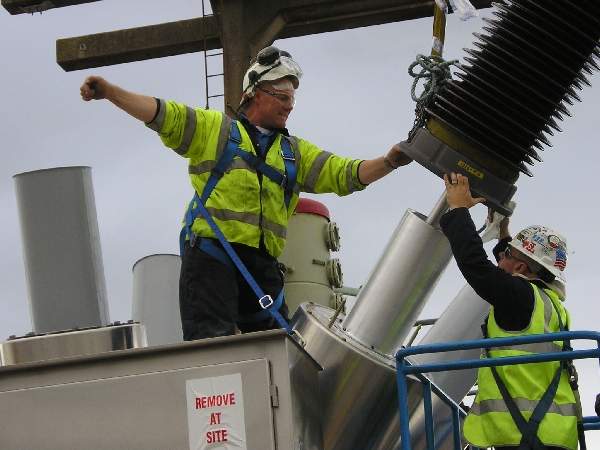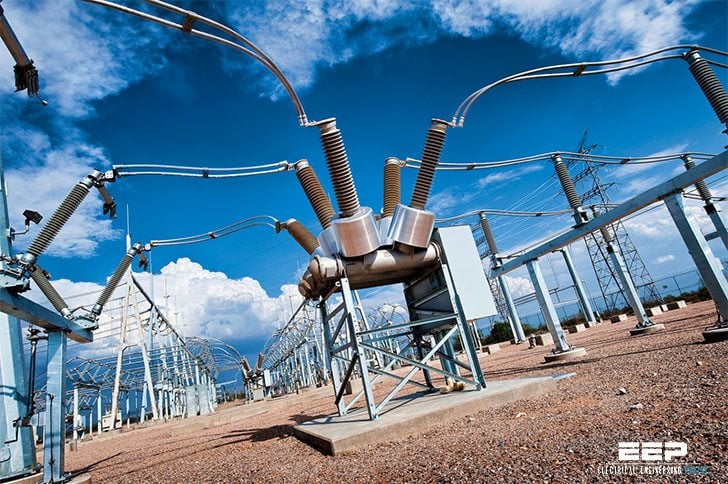A substation engineer is responsible for the design, construction, and maintenance of power substations. They ensure that the substations are able to meet the demands of the electrical grid and provide reliable power to consumers.
As a substation engineer, you will be responsible for the design, construction, and maintenance of substations. This can include anything from small electrical substations to large hydroelectric facilities. Your duties will also include overseeing the installation of new equipment and performing testing on existing equipment.
In addition, you will need to prepare reports and meet with clients to discuss project progress.
Substations: Basic Principles | Circuit Breakers | Disconnectors | Relays | CTs & VTs | Arresters
Substation Engineer Salary
As of May 2018, the median annual salary for a substation engineer was $92,040, with the top 10 percent earning more than $131,350. The lowest 10 percent earned less than $61,680.
Substation engineers are responsible for the design, construction, and operation of equipment used to step up or down voltages in electric power transmission and distribution systems.
They work with high-voltage equipment such as transformers and circuit breakers and must ensure that the substations they oversee meet all safety codes and standards.
Substation engineers typically need at least a bachelor’s degree in engineering from an accredited program. Many also hold professional engineer licenses.
With experience, substation engineers can advance to supervisory or managerial positions. Some may also become consultants or start their own engineering firms.
Substation Engineer Skills
When it comes to substation engineering, there are certain skills that are essential for success. Here are four key skills that every substation engineer should possess:
1. A strong understanding of electrical theory: This is the foundation upon which all other aspects of substation engineering are built.
Without a solid grasp of electrical theory, it will be difficult to troubleshoot problems and design effective solutions.
2. experience with CAD software: In order to create accurate drawings and models of substations, engineers need to be proficient in CAD software. This skill allows them to quickly and easily create plans and designs that can be used by construction crews.
3. Strong project management abilities: Substation projects often involve coordinating with multiple teams and contractors. As such, it’s important for engineers to have strong project management skills in order to keep everything on track.
4. Effective communication skills: When working on complex projects, clear and concise communication is essential in order to avoid misunderstandings.
Engineers need to be able to clearly explain their ideas and designs to other team members, as well as clients or customers if necessary.
Substation Engineer Interview Questions
As a substation engineer, you will be responsible for designing, constructing, and maintaining high-voltage electrical substations. In this role, you will need to have a strong understanding of electrical theory and principles. You should also be able to effectively communicate with other members of your team.
To help you prepare for your next interview, we’ve compiled a list of commonly asked substation engineer interview questions.
1. What is a typical day like for you as a substation engineer?
2. What types of projects do you typically work on?
3. What is your experience with high-voltage equipment?
4. How would you go about designing a new substation?
5.What challenges do you typically encounter when working on substation projects?
Substation Design Engineer Salary
As of May 2018, the median annual salary for substation design engineers was $92,950, with the top 10% earning more than $143,520. The lowest 10% earned less than $54,410.
Substation Design Engineer Job Description
As a substation design engineer, you will be responsible for the engineering and designing of electrical substations. This will include planning, coordination, and execution of all aspects of the substation project. You will need to have a strong understanding of electrical theory and principles in order to be successful in this role.
In addition, strong problem solving skills are essential in order to identify and resolve any issues that may arise during the course of the project. Excellent communication skills are also necessary in order to effectively communicate with other members of the engineering team as well as clients.
Substation Electrical Engineer Job Description
As a substation electrical engineer, you will be responsible for the design, construction, and maintenance of substation equipment and facilities. You will also be involved in the testing and commissioning of new substations. In addition, you will be required to provide technical support to operations and maintenance staff.
Substation Engineer Jobs
Substation engineers are responsible for the design, construction, and maintenance of substations. They work with a variety of equipment, including transformers, switchgear, and circuit breakers. Substation engineers must have a strong understanding of electrical theory and principles.
Most substation engineer jobs require a bachelor’s degree in engineering from an accredited school. Many employers also prefer candidates with experience working in the electrical industry. Substation engineer jobs are expected to grow at a rate of 9 percent between 2014 and 2024, according to the U.S. Bureau of Labor Statistics.

Credit: www.power-technology.com
What is the Job of a Substation Engineer?
Substation engineers are responsible for the design, construction, operation and maintenance of substations. Their duties include planning and coordinating the installation of equipment, testing and commissioning new substations, and troubleshooting problems with existing ones. They also develop plans for upgrading or expanding existing substations, as well as preparing cost estimates for such projects.
In addition to their technical responsibilities, substation engineers also typically oversee the work of other personnel assigned to their projects, such as electricians and technicians.
What is a Substation Designer?
A substation designer is an engineering professional who specializes in the design of electrical substations. They are responsible for the planning, layout and equipment selection for new or upgraded substations. In addition, they may also be involved in the construction supervision and commissioning of substations.
Substation designers typically have a degree in electrical engineering with specialized training in power systems. Many designers also have Professional Engineer (PE) certification. With experience, some designers may become certified as a Senior Electrical Engineer (SrEE) by the Institute of Electrical and Electronics Engineers (IEEE).
The work of a substation designer is important to ensure the safe and reliable operation of electric power systems. Substations are critical components of power grids and can be very complex due to the high voltages involved. A well-designed substation will help to minimize disruptions to electricity supply and protect equipment from damage due to faults.
How Much Does a Substation Engineer Earn in Texas?
The average salary for a substation engineer in Texas is $84,848 per year. The salary range for this position varies depending on experience and location, but the median wage is generally between $75-95k per year. Substation engineers in Texas typically work for electric utility companies or engineering firms that provide consulting services to these utilities.
What is a Substation Civil Engineer?
As a substation civil engineer, you will be responsible for the planning, design and construction of electrical substations. This will involve working with high voltage equipment and systems, as well as managing the associated risks. You will need to have a good understanding of electrical principles and be able to apply them to the design of safe and reliable substations.
In addition, you will need to be able to communicate effectively with other engineers and stakeholders, as well as being able to work within budget and time constraints.
Conclusion
A substation engineer is responsible for the planning, design, construction, and operation of electrical substations. They work with a variety of equipment, including transformers, switchgear, and circuit breakers. Substations are an important part of the electric power grid, and engineers must ensure that they are able to meet the demands of the system.

